Monika OSVALD
New trends and discoveries at TEFAF Maastricht 2019
Reviews and Presentations, 3 July 2019
TEFAF Maastricht (16-24 March 2019), the most prestigious art fair that covers 7,000 years of art history, was held for the 32nd time this year. Going to Maastricht is like going to a museum, except you can also buy something, as his CEO Patrick van Maris says.
NoveltiesDespite its well-established tradition, the fair is also known for its capacity to renovate and this year´s edition had plenty of novelties. New, younger members entered TEFAF's trustee body and executive committee. The fair reviewed the composition of the vetting committees, because of the legal issue regarding potential conflicts of interest among dealers and auction representants. They are composed of international art specialists, however, dealers can only be part of them as non-voting members. Vetting guidelines are now published in the TEFAF Maastricht 2019 catalogue (see the link below).
Next, a revised selection process was designed to make the procedure more transparent. The direct consequence was that some of the galleries were not admitted to the fair, but among the 279 exhibitors, there were 40 newcomers. The new chairman of the Modern section, the New York dealer Christophe Van de Weghe, has been working hard on improving the modern and contemporary offering, adding 14 newcomers to the section of 57 exhibitors. In his booth, the gallerist has reserved a prominent wall for a painting covered with inscriptions on a yellow background, named Onion Gum, done by Jean-Michel Basquiat in 1983. The aim of the reinforced Modern section would be to persuade the Modern and Contemporary art buyers to engage themselves with high-quality older works of art too.
Newcomers in the Modern sectionAmong the newcomers in the Modern section were some well-established galleries, such as Almine Rech, which proposed a selection of Tom Wesselmann’s works (his estate is presented worldwide exclusively by Almine Rech and Gagosian), Pace with the early works of Piet Mondrian from the collection of his legendary dealer Sidney Janis. Gmurzynska returned to TEFAF Maastricht after 17 years with a survey of works by Modern masters (Pablo Picasso, Fernand Léger, and Sonia Delaunay) and with a booth design by Tom Postma, paying homage to the rich materiality of the early 20th century interiors. Simon Lee juxtaposed the works of Pablo Picasso, George Condo, and Jean-Michel Basquiat; including Basquiat’s exceptional “portrait” of Vincent Van Gogh in a Wax Museum in Amsterdam from 1985. Sprüth Magers worked with Rosemarie Trockel to produce the unique booth concept. German conceptual artist, known for working in a variety of media, concentrated on her glazed ceramic works; Mary Mood from 2016 was also presented between mirror pieces.
TEFAF ShowcaseTEFAF Showcase, first launched in 2008, was created to provide newer galleries with the opportunity to experience a major international art fair: this year, 6 galleries were chosen. Martin Doustar (Brussels) deals with Ancient art from Africa, Oceania and the Americas. Galerie Lowet de Wotrenge (Antwerp) presented a high-quality selection of Dutch and Flemish works of art from the 16th-18th centuries, among them Death and the Miser of Frans Francken II (1581-1642), in the iconographic tradition of memento mori. Tommaso Ferruda opened his Old Masters gallery Santa Tecla (Padua) after 20 years spent in auction houses and galleries. At his booth, he presented a large altarpiece depicting Saint Jerome by Girolamo Muziano (1532-1592), who was considered one of the most important Mannerist artists working in Rome; Ferruda is currently updating the monograph on the artist. Of the two Paris galleries, Mathieu Néouze is focused on European painting 1880-1920, particularly works from the Symbolist Art movement, Samantha Sellem devoted the exhibition entirely to women artists so she had works on paper of Louise Bourgeois, Niki de Saint Phalle, and Sonia Delaunay. The booth of ArtAncient (Photo 1) was unique: selected pieces, all with the illustrations of the provenance (mainly photos of the previous owners) were set on the concrete-imitating walls. Among them, a Syracusan decadrachm, a large silver coin from 5th century BC, which was signed three times by Kimon, one of the finest master engravers of the period, and a beautifully shaped Chalcidian helmet from the Peloponnese, 6th-5th century BC. Costas Paraskevaides, a doctor by profession, but exposed to Ancient art from an early age, founded the gallery in 2009 and moved it from Cambridge to London in 2016.
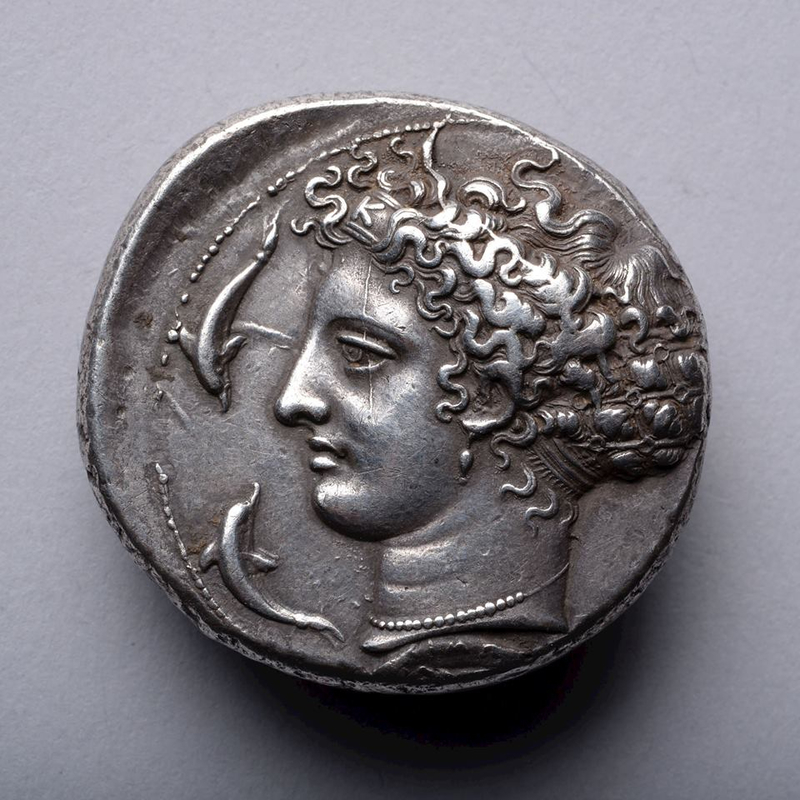
How successful taking part at the Showcase can be, we learned from Kallos Gallery, a last year’s participant, who entered the main forum of the Ancient art section this year. Baron Lorne Thyssen-Bornemisza, a collector of Roman coins and antiquities, opened his gallery in London Mayfair district in 2014; the gallery is specialised in Greco-Roman, but also Egyptian and Near Eastern antiquities. This year he presented, among others, a Greek bronze cavalry armour (helmet, cuirass, and greaves), all highly decorated, an Italiot from 4th century BC, and a marble portrait head of the Roman Emperor Hadrian.
New trends in collectingOne of the main new trends is the so-called cross-collecting and TEFAF Maastricht is a fair with mixed category offerings, similar to Frieze Art London, which includes Frieze Masters as well from 2012. The collectors’ interest in hanging works of art from different time frames seems to be driven more by the aesthetic reasons (artefacts paired together are better looking in an Instagram photo) than the academic or intellectual ones.
Aesthetic approaches are of primary importance for Axel Vervoordt, who is known for the atmospheric stands in the fairs, where he juxtaposed the ancient and the modern, the eastern and the western long before cross-collecting became a trend. The metallic tapestry sculpture of a Nigerian artist El Anatsui made a magnificent combination with a white marble hand from the Roman times. Robilant+Voena (Photo 2) have chosen more academic approach. The gallery is often a platform for re-discoveries, as in the case of Lucio Fontana. Along the canvases Concetti spaziali, Attesa and Attese from the 1960s, unknown artists’ glazed coloured ceramic sculptures Cristo and Madonna from the 1950s were juxtaposed. Fontana’s works in clay, at an intersection of figuration and abstraction, that reflect influences from the past, are on view at the Metropolitan Museum of Art, New York in the frame of the exhibition On the Threshold, the first major survey of the author in the United States in more than forty years.
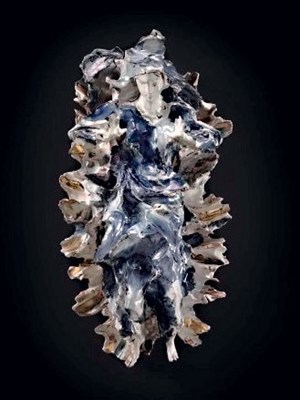
The second major trend is the increasing importance of the provenance, not only with the implicit meaning of the authenticity but also in the sense of the aura, glamour, storytelling, which makes the art object more valuable and desirable. Just as a reminder, at the last year’s auction at Christie’s in New York, Peggy and David Rockefeller collection established a new record for any private collection sold at auction, $832.5 million. This year a rare antiquity object from a collection of the Baron Elie de Rothschild was proposed on the booth of David Ghezelbash. An Achaemenid royal amphora-rhyton from 5th-4th century BC, with handles in the form of ibexes, gilded silver, acquired in the early 1950s, and partly reconstructed was evaluated in the range of €1 million.
However, a king’s collection tops the price even more. Koopman Rare Art (Photo 3) brought to TEFAF the Shield of Achilles, a silver-gilt and chased piece from 1823, made by an English goldsmith Philip Rundell. The artefact was cast after a design by the Neoclassical sculptor John Flaxman, who closely followed Homer’s description of the hero’s shield in the Iliad (his drawings are in the British Museum and the original cast is in Sir John Soane’s Museum, London) and was made in five exemplars. The first was acquired by George IV and it served as a centrepiece at his coronation banquet in 1821, this piece was purchased by his brother Ernest August, the King of Hanover. The price asked at the fair was over £5million.
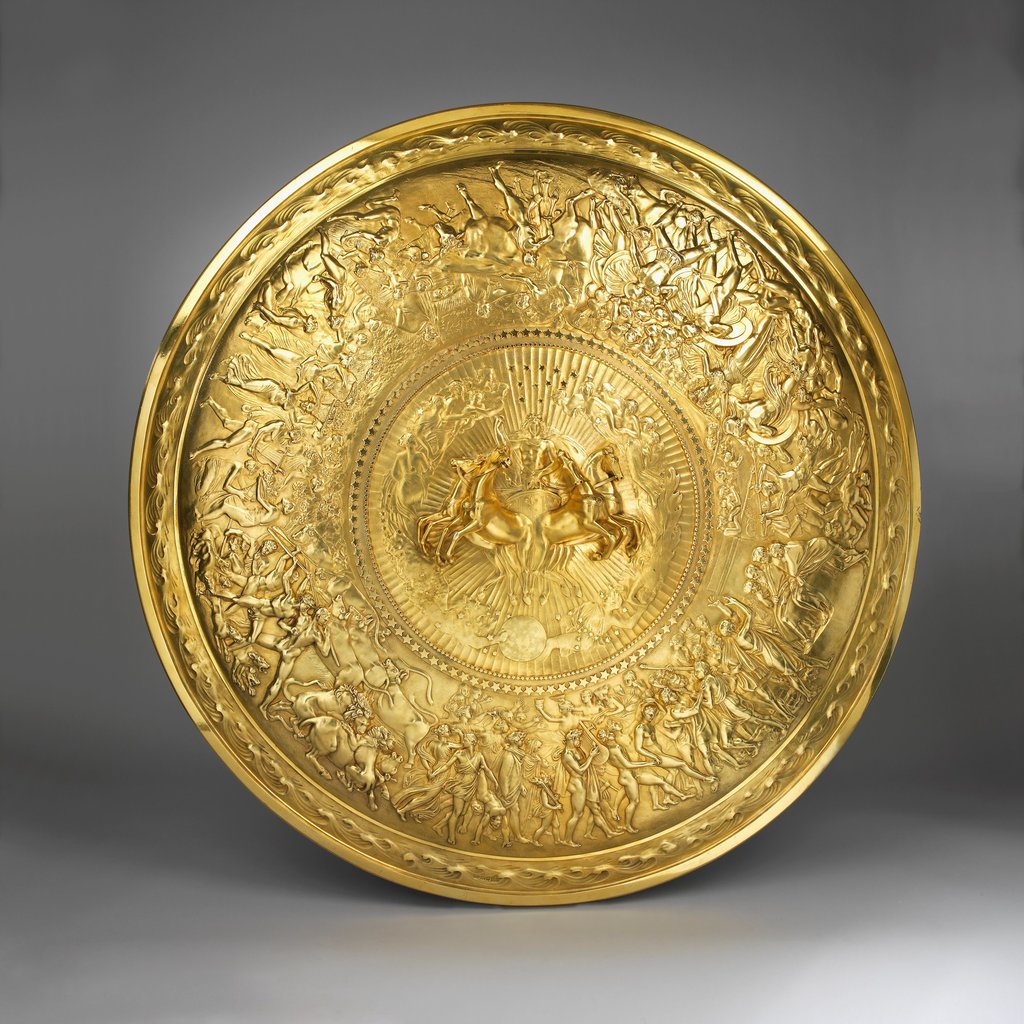
Alessandra Di Castro (Photo 4) comes from an old Roman family of antique dealers who have been doing business in the Italian capital since 1878. The entrance to the Roman gallery looks onto Piazza di Spagna and at TEFAF Maastricht, it was finally given one of the best venues on the main promenade. The gallery offer extended from the ancient world to the Grand Tour, focusing on Roman classicism throughout history, from a marble portrait head of Roman Empress Livia from 1st century to the exceptional Pompeo Batoni’s Rest on the Flight into Egypt from 1758. A classically oriented amateur could complete the most prominent Roman imperial couple with a portrait head of Roman Emperor Augustus, crowned with a laurel wreath, offered on the volumetrically defined spaces of the Tomasso Brothers Fine Art booth. However, the most vivid sculpture from the Antiquity was on the stage at Galerie Chenel (Photo 5), which always surprises everyone with the scenographic mise en œvre. The torso of Hercules, a Roman marble piece from the 1st-2nd centuries, was set into the grotto-like niche with a mirror wall, so that the muscular body could be admired from all around.
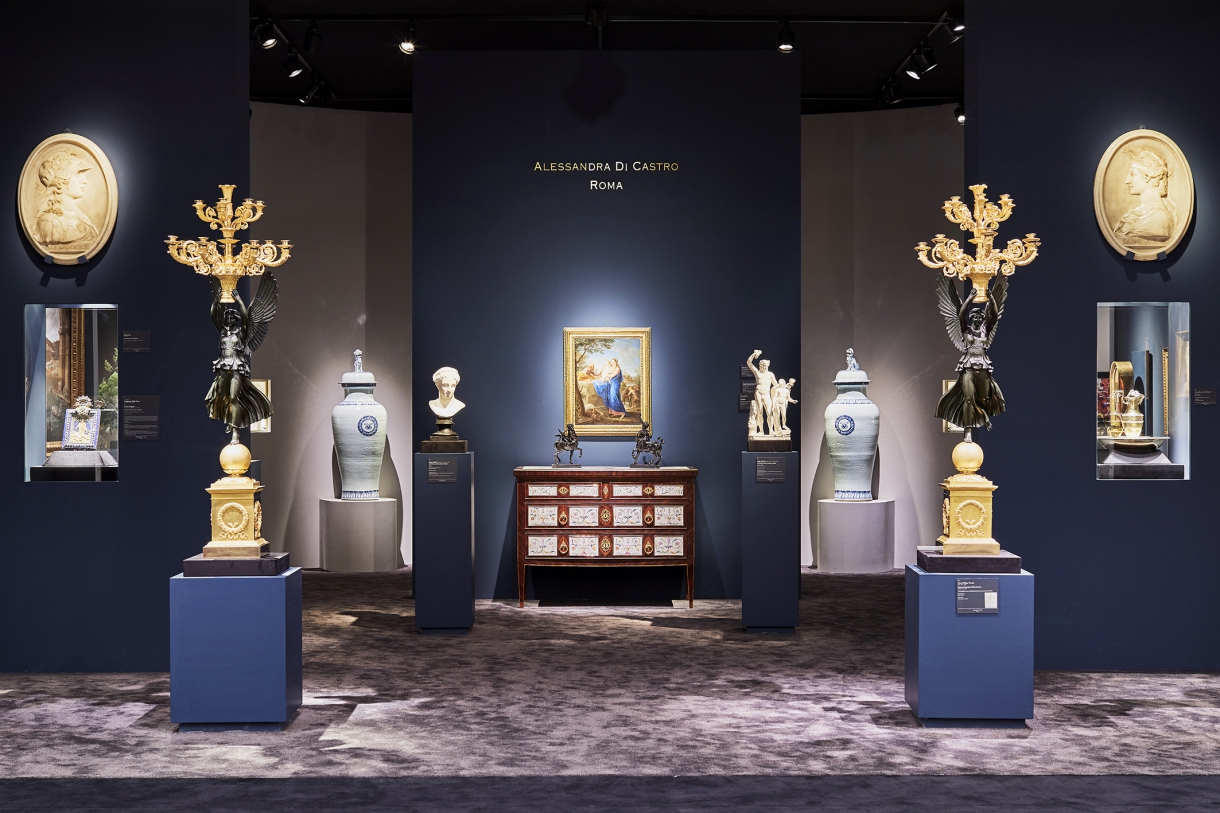
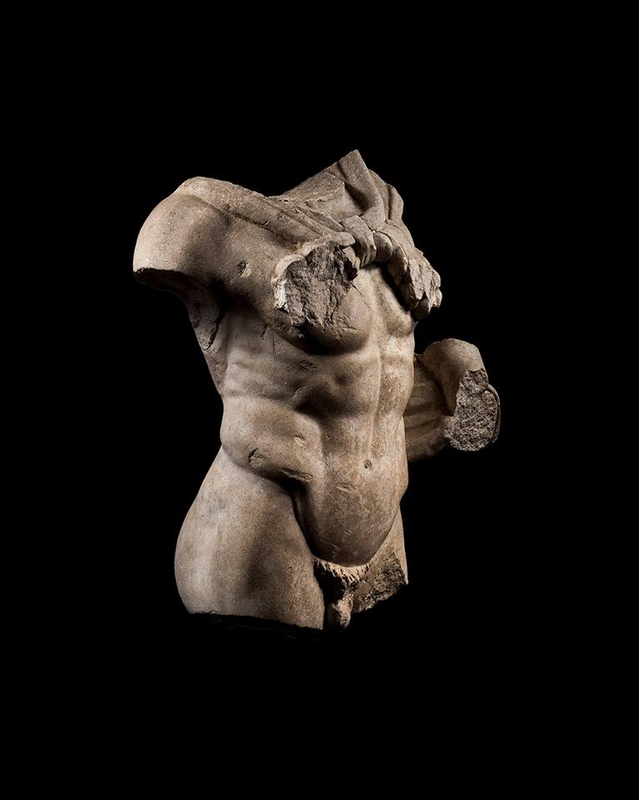
Carlo Orsi (Photo 6) presented a newly discovered and unpublished early work of an Antwerp painter Frans Floris de Vriendt. Susanna and the Elders, 1548, was made shortly after Floris’ return from Italy and reveals the artist’s careful study of Roman antiquities and the works of Italian Renaissance artists including Raphael. The sensuality of the nude Susanna is exceptional in the Flemish art in his time. Another work of the same artist, Head Study, 1550-1555, from a German princely family (since the early 18th century) was on sale by Rudigier.
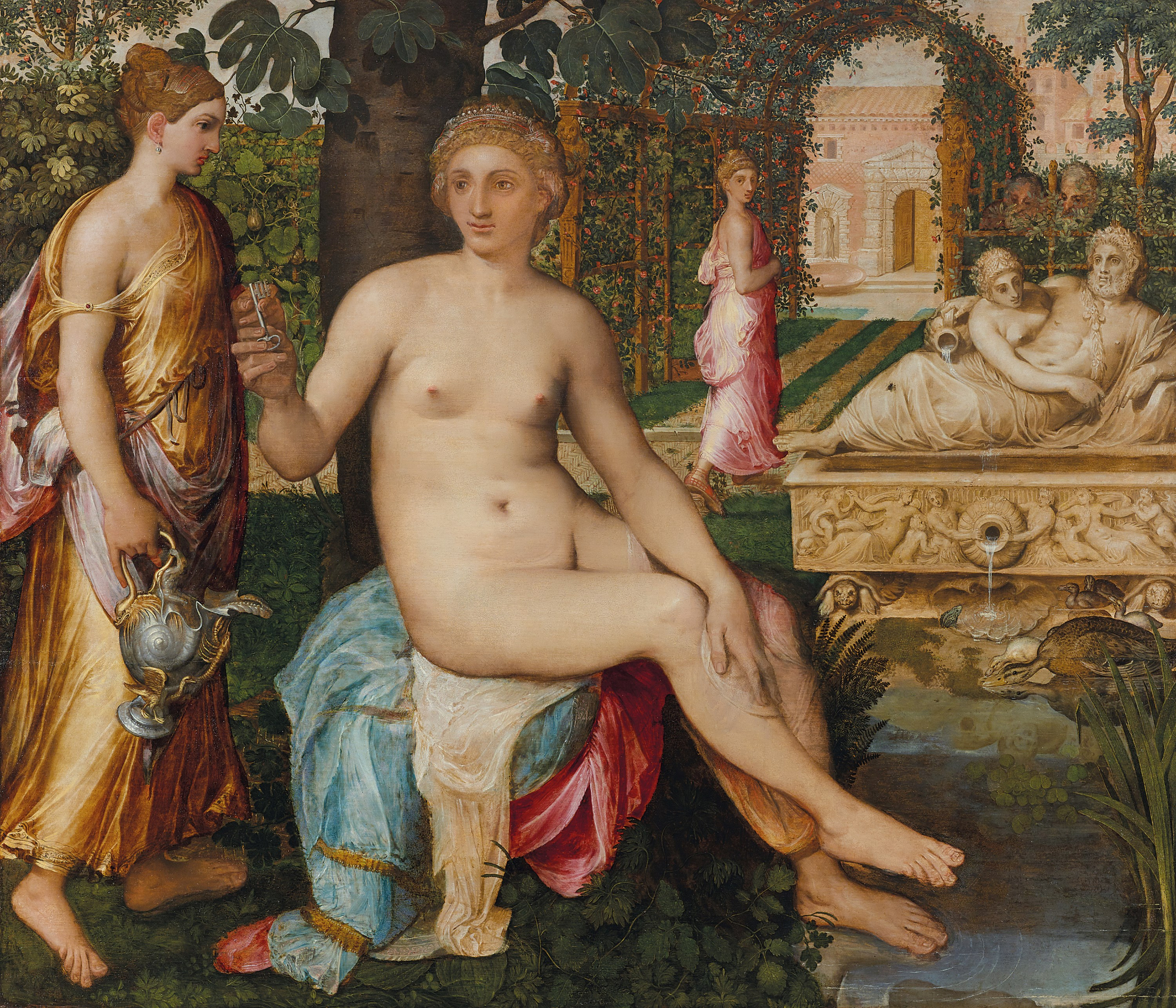
Regarding the works on paper, Librairie Camille Sourget (Photo 7) offered a luxurious collection of Giovanni Battista and Francesco Piranesi prints: 29 works bound in 27 volumes in red Morocco leather, 1189 engravings amazingly well preserved (edited by Tessier, Paris, 1804-1807). An important collection was on sale also at Shapero Rare Books: Description de l’Égypte. A series of publications (1809-1829) aimed to comprehensively catalogue all known aspects of ancient and modern Egypt, as well as its natural history. It is the collaborative work of civilian scholars and scientists, who accompanied Napoleon’s expedition to Egypt between 1798 and 1801, as well as artists and technicians, who would later compile it into a full work.
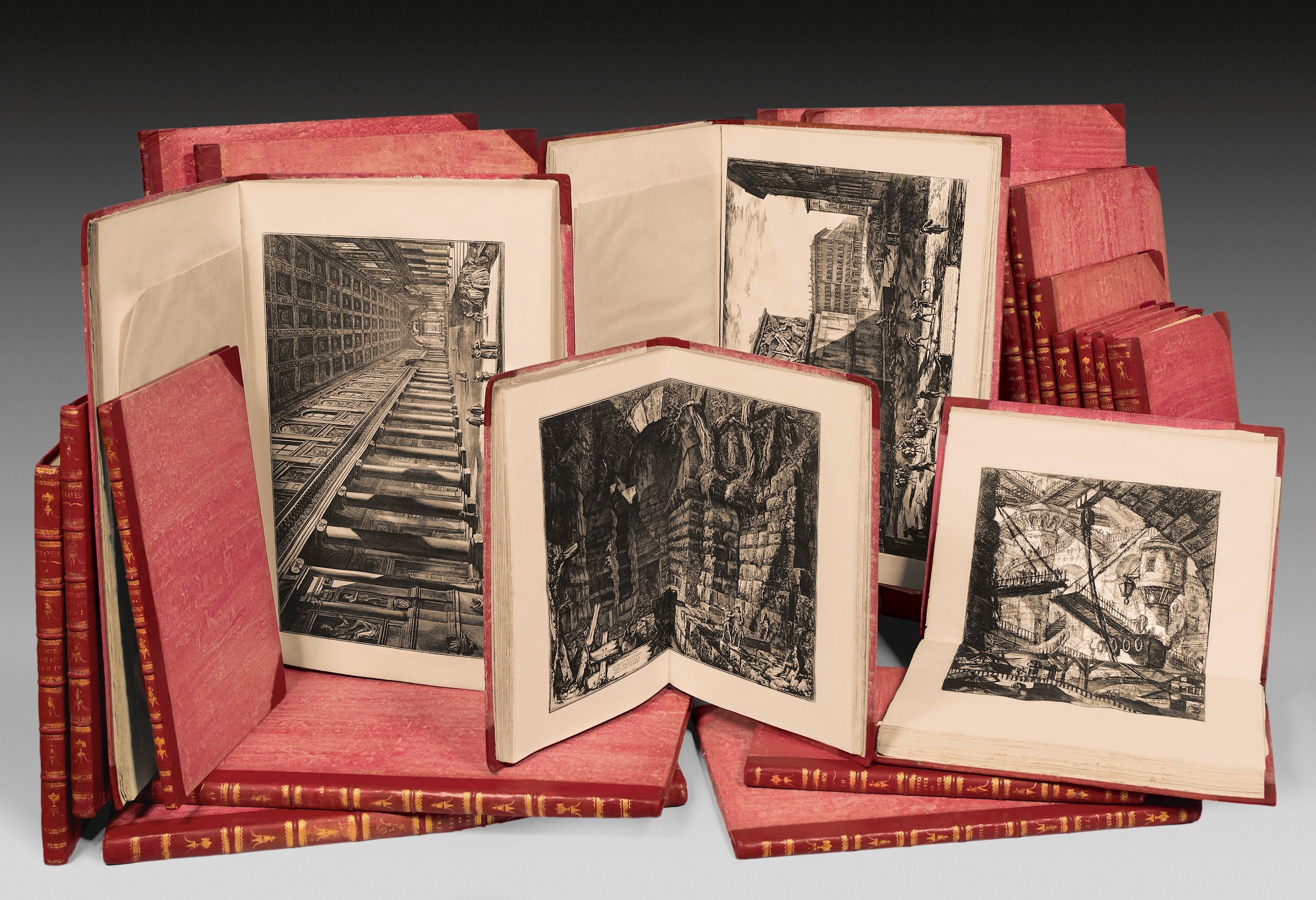
To complete the review with French inventive habit, Galerie Perrin found the last existing double-effect diorama painting The Campo Santo of Pisa by Louis Daguerre and Charles-Marie Bouton (ca. 1834). Invented in 1822 by Louis Daguerre, landscape painter and future inventor of the photography, the diorama is an elaborate form of trompe-l’oeil. The painter first depicts a landscape or architecture on canvas, before adding a multitude of details and characters in transparency. The result is a painting within the painting, revealing itself merely through special lighting techniques, only to disappear once the light returns. Conceived as an actual performance, this vast panorama was enormously popular.
TEFAF Art Market Report and TEFAF Art SymposiumKejia Wu, Professor at Sotheby’s Institute, New York, has signed the newest TEFAF Art Market Report, entitled The Chinese Art Market. The main findings follow. A tremendous quantity of art and antiquities survived after the Cultural Revolution (1966-1976) in China. From the end of the Cultural Revolution to the early 1990s, state-owned antiquities stores played an instrumental role in sourcing artworks and conducting art trading within China’s planned economy. The launch of domestic auction houses in the early 1990s marked the transition of the art trade from a planned economy to a market economy. Local auction houses released a significant supply of art and antiquities onto the open market, which in tandem with the country’s rapid economic growth and increase in individual wealth, generated a substantial demand for collecting Chinese artworks. Although Chinese paintings and Chinese decorative arts will continue to be the dominant collecting categories in the near term, a younger generation of collectors is more interested in Western and Chinese contemporary art. Due to the current lack of expertise and a limited supply of high-quality Western artworks among China’s domestic auctioneers, the younger generation of collectors will continue to buy art from Western galleries, art fairs, and auctioneers.
Some numbers from the Collectors’ Survey: 70% collectors surveyed have been collecting for over 10 years; 70% have over 100 artworks in their collection, 22% own over 1.000 works; 64% collectors have spent over $5 million on collecting art, 47% over $10 million, and 30% over $25 million. 91% of the collectors surveyed follow their passion, 52% buy art as an investment; 64% have bought Western modern and contemporary art; 83% plan to buy through galleries, 70% want to buy at art fairs, 48% intend to trade with friends; 83% plan to spend at least $1 million to collect art in next 5 years, 35 % over $10 million.
The report was launched at the TEFAF Art Symposium with a presentation by the author and was followed by a panel discussion Collectors and Collecting - The Landscape of the Art Market in China, moderated by Thomas Marks, the Editor of Apollo. The guests interviewed were Liu Gang, an eminent Chinese collector, Ben Brown, the founder of Ben Brown Fine Arts, and Adele Schlombs, the director of the Museum of East Asian Art, Cologne.
Loan exhibition and Rembrandt
The loan exhibition displayed 23 exceptional artworks from the Dresden State Art Collections. The aim was to provide a preview to the openings taking place this year - the opening of the State Apartments in the Dresden Castle in September, and the reopening of the Old Masters Painting Gallery in Zwinger in December. One of the main masterpieces, Rembrandt’s The Abduction of Ganymede, was put into the spotlight as a reminder that this year is the 350th anniversary of the painter’s death, the anniversary that will be celebrated with several exhibitions in Amsterdam (among them All the Rembrandt of the Rijksmuseum) and abroad (Rembrandt, Vermeer and the Dutch Golden Age. Masterpieces from The Leiden Collection and the Musée du Louvre, Louvre Abu Dhabi, Abu Dhabi).
TEFAF Maastricht 2019 catalogue:
https://issuu.com/tefafmaastricht/docs/tefaf_ma19_catalogue_artwork_digita
A selection of TEFAF Maastricht 2019 booths:
https://www.masterartvr.com/Tours
- ArtAncient: Kimon, Syracusan decadrachm (5th century BC)
- Robilant+Voena: Lucio Fontana, Madonna (1950s)
- Koopman Rare Art: Philip Rundell, Shield of Achilles (1823)
- Alessandra Di Castro, stand
- Galerie Chenel: Torso of Hercules (1st-2nd centuries)
- Carlo Orsi: Frans Floris de Vriendt, Susanna and the Elders (1548)
- Librairie Camille Sourget: Giovanni Battista and Francesco Piranesi, 29 works in 27 volumes
Author:
Monika Osvald
Ta e-poštni naslov je zaščiten proti smetenju. Potrebujete Javascript za pogled.
Quotation: Monika Osvald, New trends and discoveries at TEFAF Maastricht 2019, Bilten SUZD, 38/4 [3. 7. 2019], 2019 (http://www.suzd.si/bilten/prispevki/1571-bilten-suzd-38-2019-4 [date of reading]).





